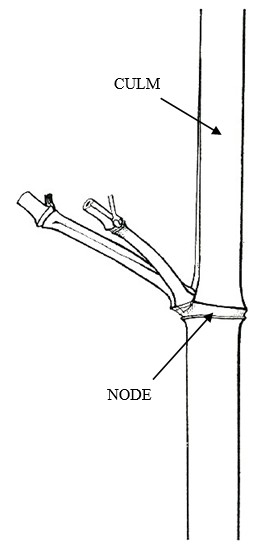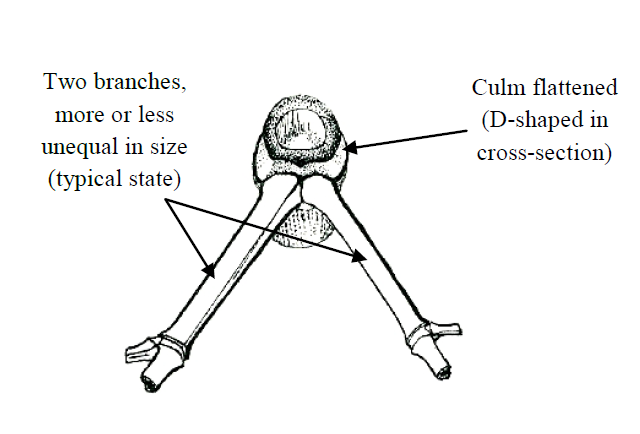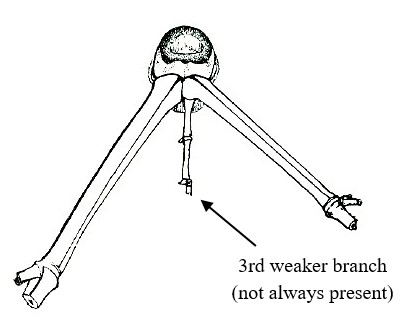for Public Act No. 13-82
Public Act No. 13-82, An Act Regulating the Planting and Sale of Running Bamboo, was passed by the Connecticut Legislature in 2013 to regulate certain bamboo species that spread by long, running, underground rhizomes. When established without appropriate buffers or barriers, these species have the potential to encroach onto neighboring properties, where they may become difficult to remove.
There are over 1,400 species of woody bamboo worldwide. Public Act No. 13-82 specifically addresses only those species in the genus Phyllostachys. The following information can be used to distinguish Phyllostachys species from other genera of woody and running bamboo commonly found in Connecticut.
BOTANICAL TERMS
Culm – A vertical aboveground stem.
Rhizome – A creeping underground stem from which vertical culms arise. Rhizomes resemble roots.
Node – A noticeable joint between segments of the culm or rhizome. The nodes are commonly swollen or slightly wider that the rest of the culm or rhizome.
TRAITS OF SPECIES IN THE GENUS PHYLLOSTACHYS
1. Culms grow from long, indeterminate rhizomes.
Phyllostachys species are commonly referred to as “running bamboo” because plants can spread as culms are produced at the nodes of long, continuous rhizomes. In contrast, clumping bamboos (not covered under Public Act No. 13-82) typically produce culms at the tips of short, thickened rhizomes.
2. Two unequal branches at the nodes located mid-way up the culm, sometimes with a weak third branch between the two (see diagram below).
NOTE: Solitary branches sometimes develop in the lower part of the culm. Also, because of the considerable height of some culms, the middle of the culm may be above eye- level. Lastly, please note that robust specimens of Phyllostachys nigra may have three branches of nearly equal size, but the mature culms generally have purple or brown coloration.

3. On smaller stems, the culm is strongly flattened (i.e. D-shaped in cross-section) for the entire length between branch- bearing nodes.
NOTE: Sometimes this trait may be less obvious or absent on larger culms.

Important: this law impacts only plants in the genus Phyllostacyhs. Other bamboo genera, including Arundinaria, Fargesia, Hibanobambusa, Pleioblastus, Pseudosasa, Sasa, Semiarundinaia, and others, are not affected by Public Act No. 13-82.

Source: McClure, F.A. (1957)
Resources:
McClure, F.A. 1957. Bamboos of the genus Phyllostachys under cultivation in the United States.
U.S. Department of Agriculture, Agriculture Research Service, Agriculture Handbook No. 114.
U.S. Government Printing Office, Washington, D.C., U.S.A. 69 pp.
Stapleton, C.M.A and M. Barkworth. 2007. Phyllostachys. In: Flora of North America Editorial Committee, eds. 1993+. Flora of North America North of Mexico. 16+ vols. New York and Oxford. Vol. 24, pp. 25-27.

Assembled by Nelson DeBarros and Logan Senack August 2013